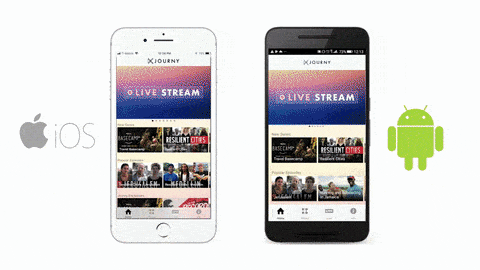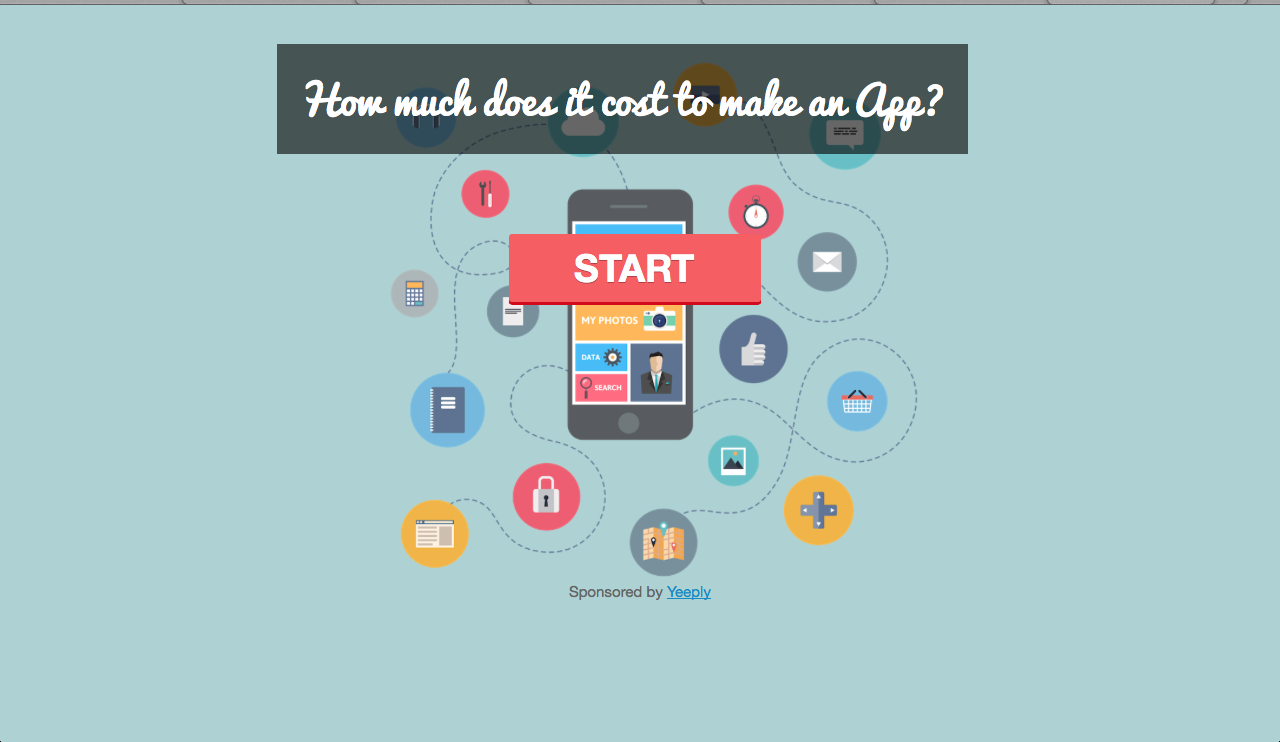When choosing the type of development for your application, you’ll discover that you have plenty of options. Your final decision depends on the type of app you want to create, the budget you have and even the time frame you set for its launch (among many other factors!).
Cross-platform applications, for example, have a lower cost and faster development: with a single code, they can be used on several operating systems. However, the cross-platform app development also has its limitations…
In this entry, we’ll talk about the characteristics of this type of app and its development process using one of the most popular programming languages: HTML5.
Index – Cross-platform App Development with HTML5
- What is a cross-platform application?
- What exactly is HTML5?
- Advantages and disadvantages of cross-platform app development
- Cross-platform app development tools
- Shall we help you build a cross-platform app?
What is a cross-platform application?
For those of you who are new to the world of apps, the difference between native and cross-platform apps is as follows.
- Native applications are written in the language of each operating system. This means that each system (Android, iOS…) requires a separate development process.
- Cross-platform applications have a single code that is interpreted and adjusted to all operating systems. We’d say that they’re practically the same as web applications we’ve talked about in other articles.

The development of cross-platform apps for mobile can be carried out in two different ways:
- Using specific web development languages, such as HTML5, CSS and JavaScript. The code is then displayed inside a native container, the WebView. Applications created in this way are also known as hybrid apps.
- Using native rendering tools. These serve as a bridge between the cross-platform code and the native components. This type of development is done with frameworks such as Xamarin, React Native or Flutter.
Like we just said, HTML5 is one of the web languages that allow us to program a cross-platform app. Let’s find out more about it.
What exactly is HTML5?
HTML5 is a markup language used to structure and display content on websites. It provides support to advanced multimedia applications − including audio and video. But it also allows us to modify a page’s layout and thus change its appearance.
In this regard, how can app developers take advantage of it? An expert can programme mobile apps with HMTL5 that can be displayed via a browser on any device.
HTML5 is indeed one of the most versatile languages for developing web applications and the most widely used for creating non-native apps.
Over 50% of mobile applications are developed with HTML5 in combination with JavaScript and CSS.
Is HTML5 the best cross-platform programming language?
First of all, it’s worth noting that HTML5 is a very widely used programming language. In fact, it’s the standard web programming language since October 2014, so there are always plenty of resources on it to be found.
In addition, the World Wide Web Consortium (W3C) has bestowed its “Recommended” stamp upon its fifth version.
Compared to previous versions of HTML and other programming languages, its fifth version includes new features for including video and audio and – on top of that − implements responsive design automatically.

The importance of HTML5 and its use in cross-platform apps
We have already made it clear why this programming language is important both in a global sense and for conventional programmers. But do you know which features render it one of the best options for programming cross-platform apps?
We’ll discuss the advantages that HTML5 entails when used to create mobile applications.
- First and foremost we come across its universality, i.e. it works in all browsers, whether on mobile devices or on a traditional computer. The code is interpreted and displayed by any browser (Chrome, Safari, Firefox, Internet Explorer…).
- It’s also a language with a clear audio-visual vocation and allows including both audio and video at a native level. It stands up for showing and including multimedia content.
- It’s mobile-friendly. Another of the advantages of programming mobile apps with HTML5 is that this language seeks to be responsive, i.e. it adapts to the screen in which the content is displayed. For this reason, it’s perfect for creating websites that are going to be displayed as applications (web apps). According to analyst firm Vision Mobile, over 50% of mobile applications currently use HTML5 with JavaScript and CSS.
- It’s a great option for limited budgets because it’s cheaper than other native alternatives. Likewise, an HTML5 version entails significant savings when getting our business or mobile game started by developing a beta version and is a clever way to see if it works and if there is a market for it. Games like Candy Crush and the like (puzzle solving) can be created with this technology and be redeveloped as native apps later on.
- HTML allows you to programme mobile apps in beta. And last but not least, HTML5 is an open-source kind of language: i.e. anyone can modify, improve, expand or implement new services on already developed applications.
For the ones that have to stick to a budget, it’s recommended to find out first how much it would cost to create a cross-platform mobile app. Or to start with a beta version of your app to see if it functions like expected and if there’s a market for it.
Advantages and disadvantages of cross-platform app development
Despite everything we told you in the previous section, HTML5 doesn’t always have to be the best option to develop your app. We’ve listed some advantages and disadvantages to help you make up your mind.
Advantages of programming cross-platform apps with HTML5
Why do many companies decide to go for cross-platform development instead of native development? Here are several reasons.
- Extended development language. Both HTML5 and JavaScript are programming languages that many web developers are familiar with. Besides, they can use their experience to get into cross-platform app development quite easily.
- Fewer resources, lower cost. No need to double or triple resources to make the same app run on several operating systems. This makes the development process less expensive.
- Consistency of the user interface (UI). The look & feel of the application will be homogeneous across the different devices where it’s used.
- Faster launch compared to native development. The app depends on a single development, so it’s easier to meet deadlines.
? Looking for cross-platform app developers? Find them at Yeeply.

Disadvantages of programming cross-platform apps with HTML5
If any of these issues seem critical to you, native development may be the best option for your application.
- Reducing the speed of the app.
- Access to the device’s hardware is limited due to the available plugins.
- Time investment to validate functioning on each platform. Although the app should work automatically on any platform, this still needs to be double-checked. It should look and work the same on each platform. In addition, every time an update is published for one of the operating systems, the application must be checked to ensure that it runs correctly on every device.
Important: despite the fact that cross-platform apps should be able to run on every operating system, it’s still necessary to generate an APK (Android Package) or IPA (iOS App Store Package). This is required to make the coding readable and displayed on mobile devices. That’s why the SDK (Software Development Kit) for each platform is needed.
As an alternative, one could use a service that generates it automatically like Adobe Build.
Cross-platform app development tools

The most common cross-platform app development tools − for apps of the WebView type − are shown below:
- Apache Cordova. A framework for mobile application development owned by Adobe Systems that allows programmers to develop applications for mobile devices by using generic web tools such as JavaScript, HTML5, and CSS3, resulting in hybrid applications.
- AngularJS. JavaScript is an open-source framework − sustained by Google − which is used to create and support single-page web applications.
- Ionic. A free and open-source tool for hybrid application development based on HTML5, CSS, and JS. The tool is built around Sass and optimised with AngularJS.
Although the quality of these applications is not the best to be found − especially when compared with native app development − they work very well for small and medium projects that require neither high performance nor too many features.
As a matter of fact, Facebook’s first application was developed with this technology until it was later decided to develop native app versions.
Related content: Deep linking in Android and iOS applications
Shall we help you build a cross-platform app?
Do you think that cross-platform app development in HTML5 is exactly what you need? Then start looking for a team of developers to take care of the programming.
How? Find them easily via Yeeply!
We’re a platform that connects you with the best team to carry out your mobile app development project. We use a powerful algorithm that takes into account the characteristics of your project, your budget and your deadlines among other factors. With all this information, the algorithm chooses your perfect development team.
Tell us about your project… and let’s get to work!
Editor’s note: This article was originally published in October 2016 and has been updated for freshness, accuracy and comprehensiveness.













